Caramelization Isn’t Just for Caramel: Maximize Texture and Flavor with Professional Technique

Contents:
What is Caramelization?
Caramelization Creates New Flavors
Caramelization Radically Changes Texture
Caramelization is a Delicate Balance
Different Ways to Caramelize and How to Use Them
Boring. Just give me the recipe.
This isn’t an article about candy making. It’s an article about one of the greatest principles I know when making delicious food, and it all boils down to heat.
The proper application of heat is a pillar of the culinary arts. “Cooking” food isn’t just to kill bacteria; rather, heat transforms your food all the way down to the molecular level, causing changes in flavor, color, and texture.
Proper cooking makes things easier to eat by softening them and breaking food molecules down before consumption. It also changes the structure of chemicals, making them easier to digest and easier for our bodies to absorb their nutrients. This is called bioavailability.
Because of this, we are naturally inclined to love a phenomenon called caramelization. This isn’t just for candy and baked goodies—caramelization is foundational to all cooking, including meats, vegetables, fruits, breads, pastries, and yes, desserts.
What is Caramelization?
Most food has sugar in some form or another, whether it be lactose in dairy products, glucose in breads and starches, or fructose and sucrose in the sweeter goodies we usually associate with “sugar.” Caramelization is simply the browning of those sugars through the application of heat. It involves the thermal decomposition of sugars, resulting in new compounds with a sweet, nutty flavor and a deep brown color.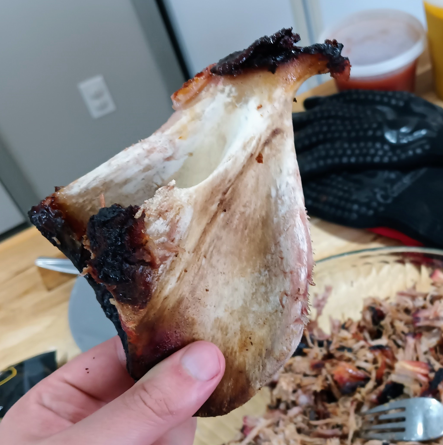
Caramelized food is delicious, and it drives us wild just thinking about it. Look at the caramelized bits on each end of this shoulder bone, which I pulled from a pork butt I smoked last week. The entire exterior of the pork butt was a deep brown, which occurred from the freeze-dried honey I’d covered the pork in.
Caramelization Creates New Flavors

Caramelization plays a crucial role in developing a rich spectrum of new flavors. Here are some of the new flavors that caramelization contributed to in the sweet rolls my wife made last week:
Sweetness: Caramelization introduces a delightful sweetness to the bread. As sugars break down and undergo browning, they develop a sugary taste that complements the natural flavors of the bread.
Nutty Notes: Caramelized sugars often produce nutty or toasty flavors, which can add depth and complexity to the bread’s taste.
Richness: Caramelization brings a richness to the flavor profile. The deep, golden-brown color and the caramelized sugars contribute to a sense of depth and warmth in the bread’s taste.
Complex Aromas: Beyond taste, caramelization also contributes to the aroma of the bread. The Maillard reaction produces an array of volatile compounds that create a complex and appetizing scent, making the bread more enticing.
Bitterness (if overdone): Excessive caramelization can lead to bitterness, which is generally (though not always) undesirable. Properly controlled caramelization should bring out sweetness and richness without crossing into bitterness.
A good example of these kinds of goodies of caramelization are the bundt cake recipes that Mary shared a few weeks ago.
Caramelization Radically Changes Texture
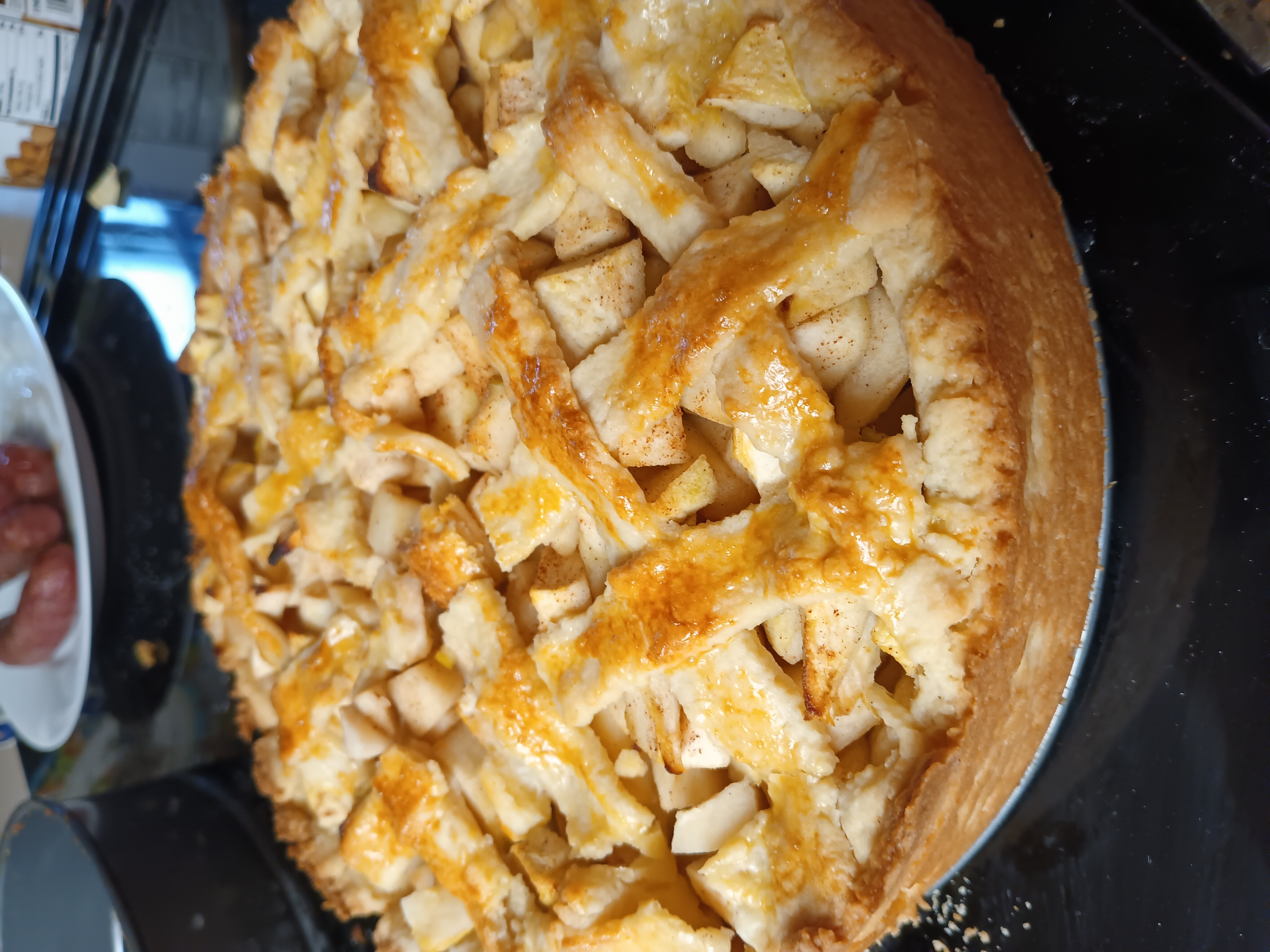
Caramelization makes a big difference in texture. This can be a good thing, like the buttery crispiness of the appeltaart in my picture above or the incredible bark that develops on properly cooked meats. But textural changes can also be bad if the caramelization process ruins the water content of your food.
Remember this: water is the enemy of caramelization. If you want to completely caramelize something, you have to get the water out of it.
This is because caramelization occurs at 240℉ (in natural sugars like fruits and vegetables), and 320℉ (in table sugars), but water holds its max temperature as 212 F. So if your food has water in it, the temperature will stall before caramelization can occur. To achieve that gorgeous browning and crispy texture, you have to evaporate enough water from the food so it can reach the optimum temperature.
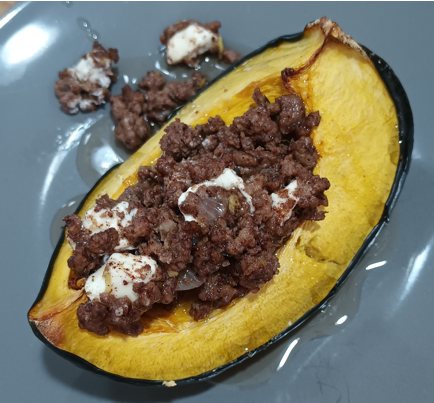
In this picture, you can see that I caramelized the outer “skin” of the squash, but I didn’t let the entire thing get too hot. In fact, I kept it so juicy that you can see water leaking out onto my plate.
An example of a food that is thoroughly caramelized is sun-dried tomatoes. The water has been taken out of them, which leaves them free to caramelize at a gentle, relatively low temperature (240℉) and develop some intense and incredible flavors. However, you don’t always want that semi-tough texture of a sun-dried tomato. Consider whether caramelization is worth it, and to what extent you want to go.
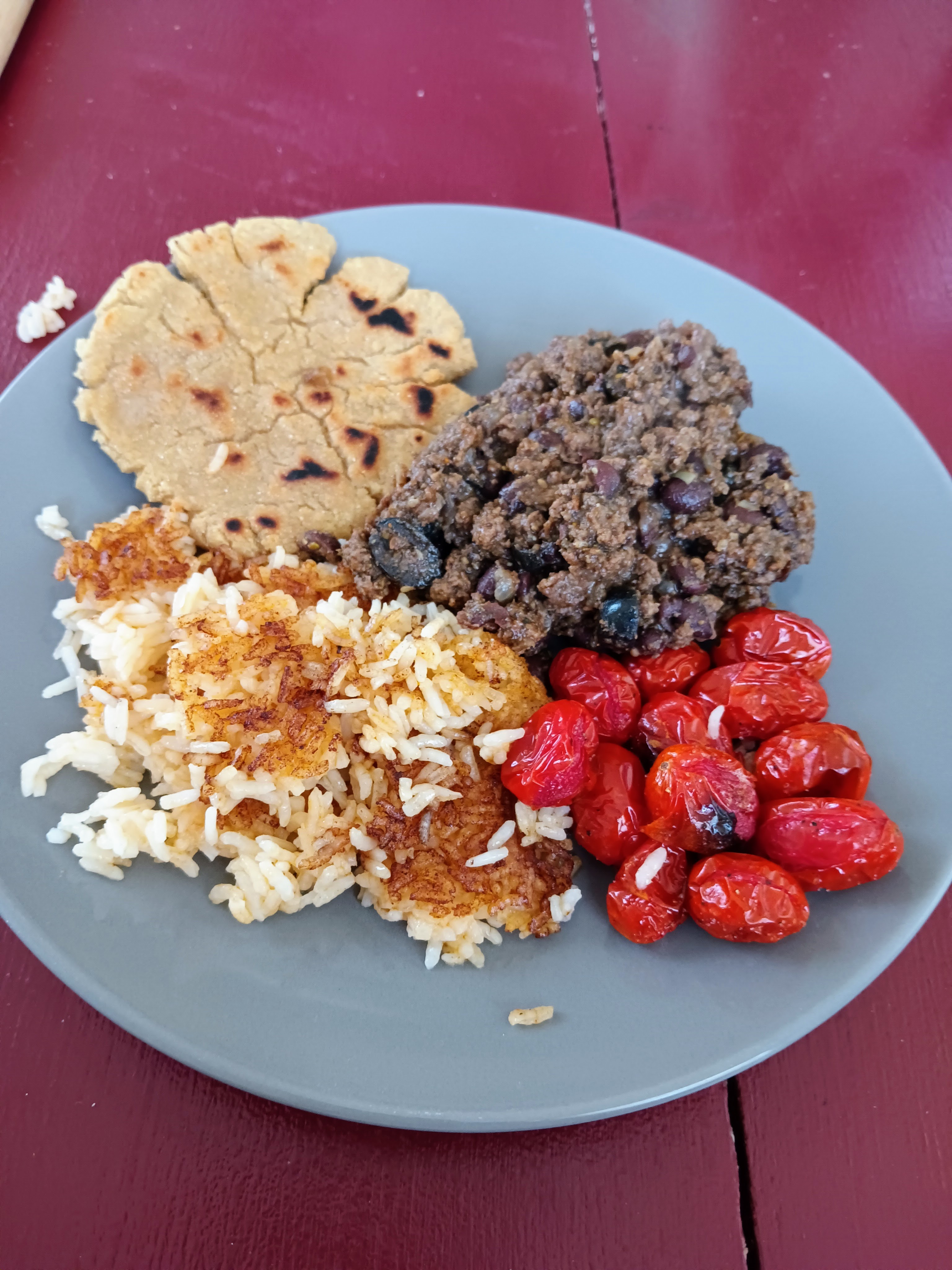
In this meal, I finished making the rice and removed it from the pan, then I melted some beef tallow on the bottom of the pan and put the rice up before slamming the heat on high. Beef tallow gets much hotter than water, allowing the bottom layer of the rice to caramelize. As soon as I smelled some delicious nuttiness, I pulled the rice from the heat and served it. It had a complex flavor profile, and the browned bits were toothsome and chewy, adding an awesome textural element.
On the other hand, I didn’t want dry tomatoes. So instead, I roasted them on high-heat to only caramelize the outer layer of my grape tomatoes. Once the inside was soft, but not dry, I removed them from the heat.
Caramelization is a Delicate Balance
When caramelizing your food, you need to decide between a few elements. Would you rather have your food thoroughly caramelized, but tougher and less nuanced in texture? Or would you rather have a delicious outer skin and soft, juicy interior, but less caramelization?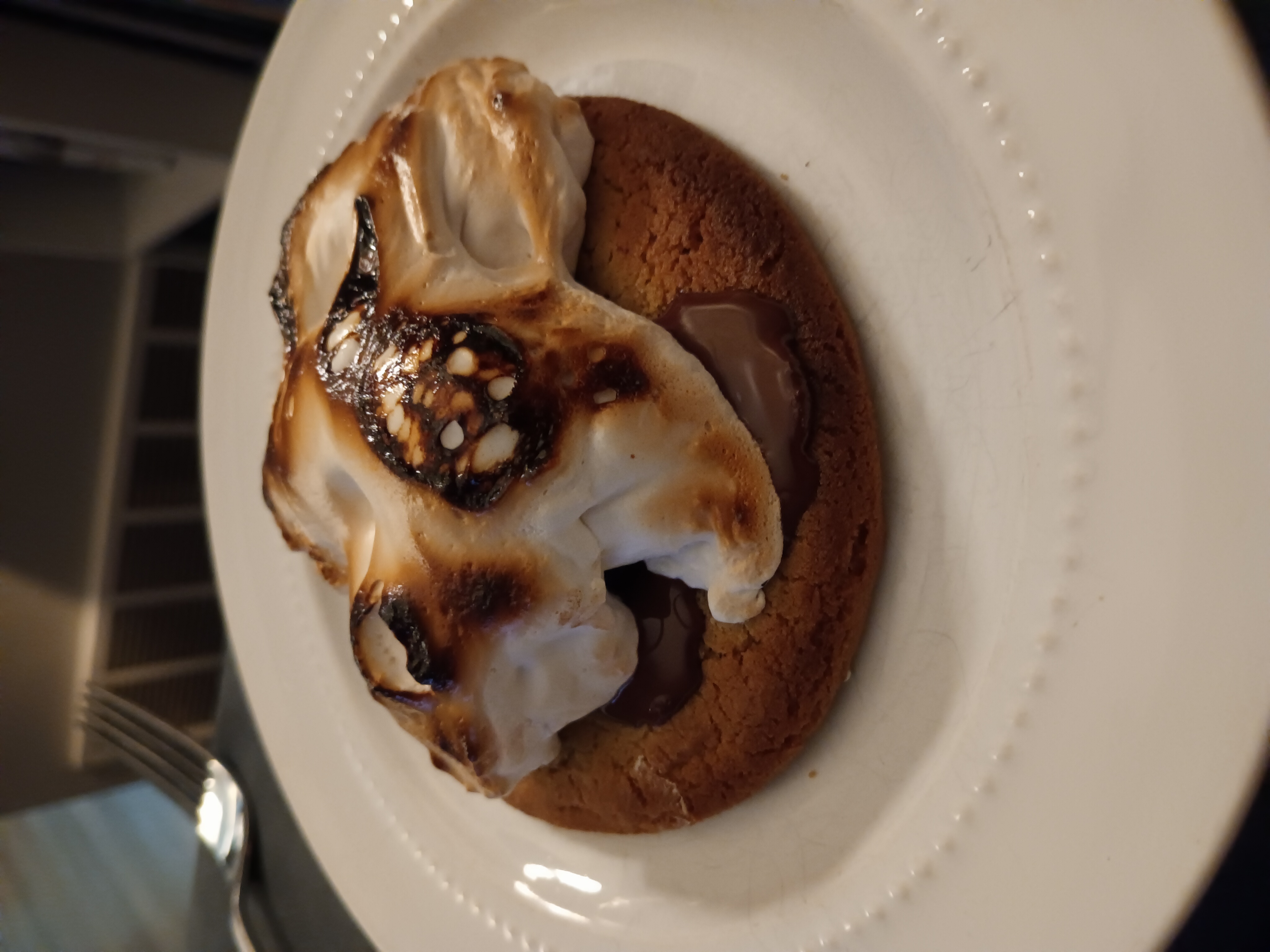
Another consideration is to be careful if attempting high-heat caramelization, which is typical with fruits, sweets, and factory-made sugars. Low-heat caramelization, like breads and roasted vegetables, can be pretty forgiving, letting your temperature swerve between low-and high ranges. This is because water content regulates the temperature for you. But low-water, high-sucrose foods like table sugar, honey, or in this case, marshmallows, can burn quickly, so you need to watch it like a hawk. In the above picture, I’ve been working on a gourmet smore of sorts (molasses cookie, artisan chocolate, and homemade marshmallow). However, you can see that not only did I burn the cookie—I burned the marshmallow too! But burned marshmallow is delicious, and bitter isn’t always bad.
Different Ways to Caramelize and How to Use Them
There are two temperatures to master when considering caramelization, and one master technique that I’m excited to share. Try experimenting with the following techniques and let me know how it goes.Low and Slow
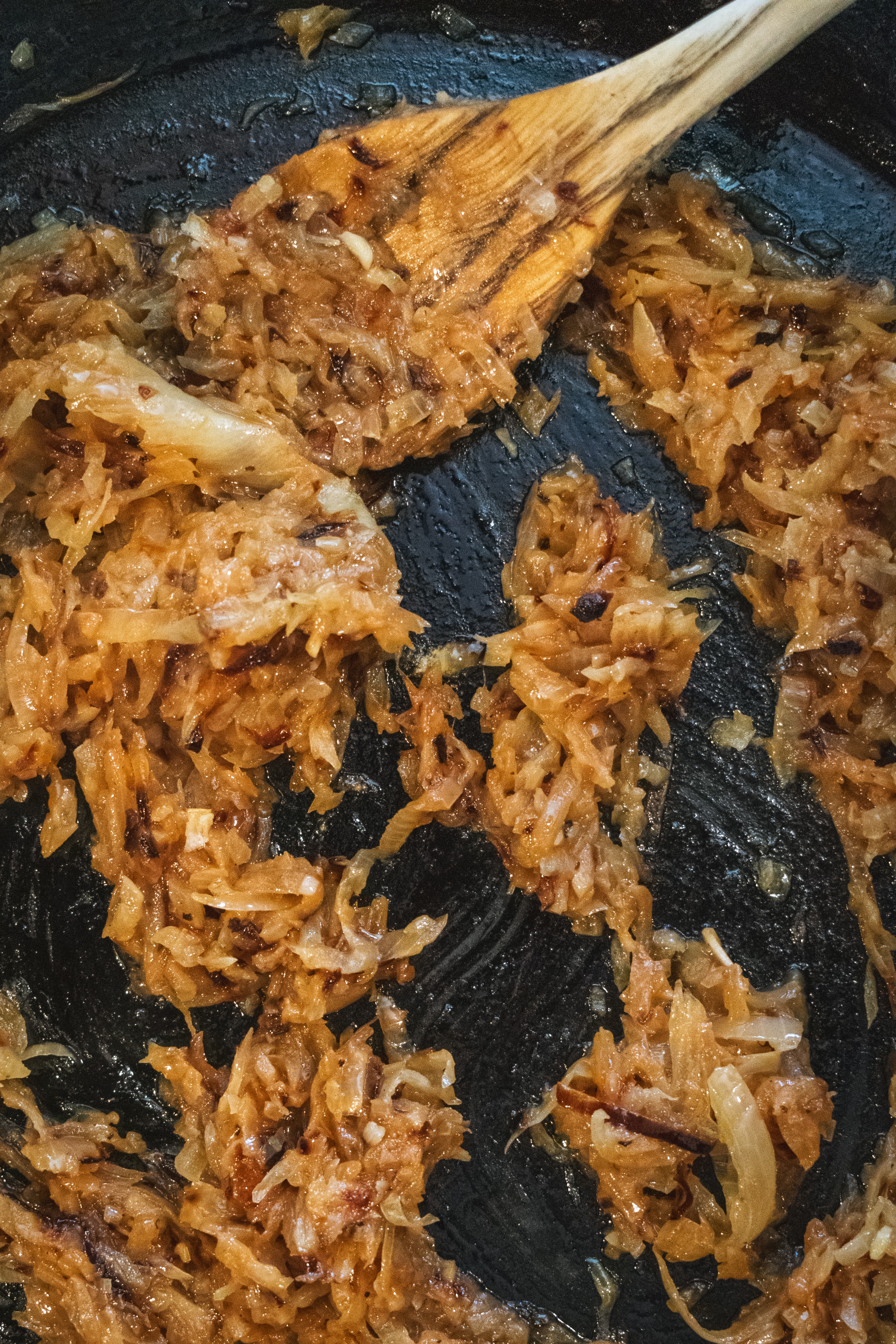
Very-low temperature ranges (250℉ or below, if you’re baking) are ideal if you want to thoroughly caramelize your food. Consider the following:
- Almost entirely removes the water content from food.
- Almost entirely caramelizes the food.
- Takes a very, very long time.
Re-read that last bullet point. When it comes to low and slow, there are no shortcuts! You can’t force caramelization to happen in your Instant Pot. Just mixing table sugar in with it is cheating and is not true caramelization.
Try low and slow cooking the next time you have a snow day or free weekend. Slice tomatoes thin and bake them at 240℉. Slice an onion and spend eight hours cooking it on low over the stove.
The sad truth is most of us have never actually had caramelized onions. We’ve just had sauteed onions with sugar. There’s a difference, and there’s a good reason that Michelin-starred restaurants serve caramelized onions with a deep brown color. They’re not just sweet—they’re caramelized!
Screaming Hot
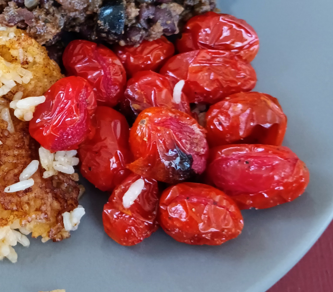
If you’re in a hurry, or if you want to keep moisture in your food, try cooking at temperatures of 400℉ and above. This rapidly evaporates the water in the outermost layers of the food, but it doesn’t affect the water in the food’s center. This way you can get onions and carrots with delicious blackened edges, but they still have a snappy texture and good, fresh notes. Or in the case of the photo above, you can get a complex flavor on your tomato skin, but still enjoy the pop of a juicy grape tomato.
The best part about this technique is it’s fast. Try the following:
- Clean and dry your vegetables.
- Peel them if necessary.
- Cut them up if you want them to.
- Salt them.
- Oil them—preferably with beef tallow, but any high-smoke-point oil will do. Just do not use butter or olive oil.
- Blast them in the oven at somewhere between 400 and 450℉.
- Keep an eye on them, and pull them out when they start to sing, or look or smell ready. Your gut will tell you what to do if you just pay attention to what’s happening to the food.
- Pull your veggies out and enjoy. Be careful not to burn your tongue.
Reverse Sear
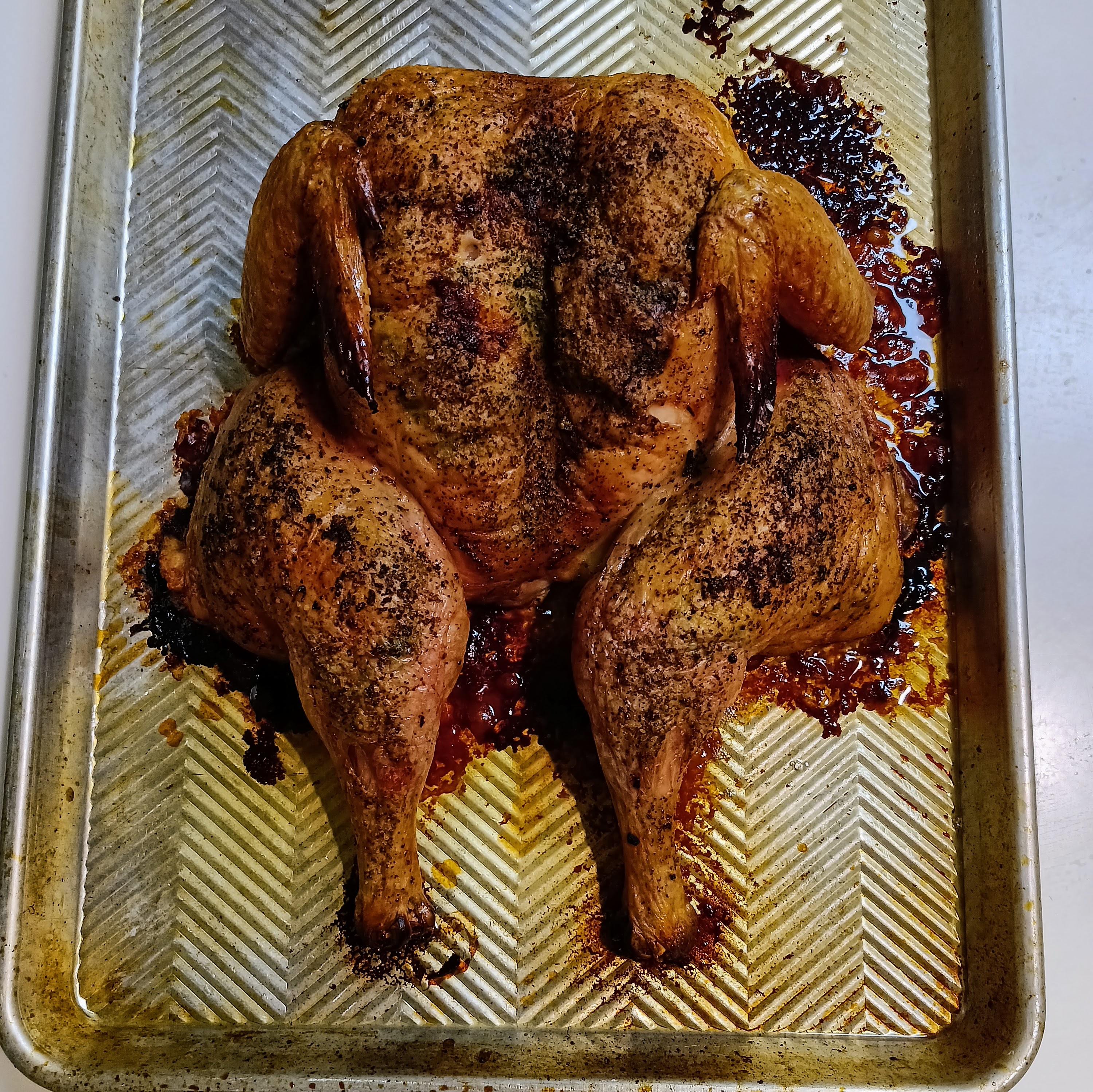
If you haven’t heard of the reverse sear before, I’m about to change your life. This technique is the king of cooking techniques when you’re roasting meats. However, in order to make it work, you need a meat thermometer with an oven-safe probe. You need to keep careful track of what’s going on inside your meat, not just inside the oven. It is called the reverse sear because traditional searing happens before you roast your meat. This method cooks and then sears.
My wife no longer orders chicken at restaurants because it’s too dry, undersalted, and flavorless compared to mine. I make the best chicken I’ve ever had, and I mastered the recipe with only two ingredients: chicken and salt. The chicken you see in the picture lasted one night and until lunch the next day. After I’d pulled it from the oven, I hunkered over the countertop like a feral raccoon and sucked on chicken bones until it was time for bed.
Here’s how it works.
- “Cooking” starts 24 hours before the bird goes into your oven. Take the chicken out of its packaging, thoroughly dry it off, and generously salt the chicken all over. Place it back in the fridge, preferably uncovered, overnight.
- Optional: spatchcock your chicken (aka use kitchen shears to remove its spine). This lets you pull the bird apart and cook it more uniformly with its thighs and breast both facing upward.
- When you’re ready to cook, don’t worry about tempering the meat (aka taking it out of the fridge and letting it sit for hours until it reaches room temperature). Just preheat your oven to 200℉, and while it gets up to temperature, take out your chicken and pat it dry again.
- Place the chicken in the oven with its thighs toward the back and its breast toward the door (thighs are mostly dark meat, so you want them to reach a higher temperature than the breast).
- Cook the chicken at 200℉. Your goal is for the internal temperature of your chicken to reach 140℉ (which is not a safe temperature yet). The process will take over an hour. The chicken will look underdone and gross this entire time. Just be patient.
- The second your chicken’s temperature hits 140℉, crank your oven’s heat to 400℉. This will begin the caramelization process.
- The moment your chicken hits 163 F internally, take it from the oven. The skin will be brown, beautiful, and crispy as a chip, but the meat will be so juicy you can eat it with a spoon.
- Try not to burn your mouth, but I’ll understand if you do. I certainly did.
Matthew's Reverse Seared Chicken

If you haven’t heard of the reverse sear before, I’m about to change your life. This technique is the king of cooking techniques when you’re roasting meats. It is called the reverse sear because traditional searing happens before you roast your meat. This method cooks at low temperature first and sears after. The outer layer of the meat is left beautifully caramelized, while the interior remains succulent and incredibly juicy. In order to make this work, you need a meat thermometer with an oven-safe probe.
Prep time:
Cook time:
Yield: 1 chicken
Serving size: 4
Calories per serving: 30
Ingredients:
Cook time:
Yield: 1 chicken
Serving size: 4
Calories per serving: 30
1 whole chicken, bone in
salt
Directions:
“Cooking” starts 24 hours before the bird goes into your oven. Take the chicken out of its packaging, thoroughly dry it off, and generously salt the chicken all over. Place it back in the fridge, preferably uncovered, overnight.
Optional: spatchcock your chicken (aka use kitchen shears to remove its spine). This lets you pull the bird apart and cook it more uniformly with its thighs and breast both facing upward.
When you’re ready to cook, don’t worry about tempering the meat (aka taking it out of the fridge and letting it sit for hours until it reaches room temperature). Just preheat your oven to 200?, and while it gets up to temperature, take out your chicken and pat it dry again.
Place the chicken in the oven with its thighs toward the back and its breast toward the door (thighs are mostly dark meat, so you want them to reach a higher temperature than the breast).
Cook the chicken at 200?. Your goal is for the internal temperature of your chicken to reach 140? (which is not a safe temperature yet). The process will take over an hour. The chicken will look underdone and gross this entire time. Just be patient.
The second your chicken’s temperature hits 140?, crank your oven’s heat to 400?. This will begin the caramelization process.
The moment your chicken hits 163 F internally, take it from the oven. The skin will be brown, beautiful, and crispy as a chip, but the meat will be so juicy you can eat it with a spoon.
Try not to burn your mouth, but I’ll understand if you do. I certainly did.
Optional: spatchcock your chicken (aka use kitchen shears to remove its spine). This lets you pull the bird apart and cook it more uniformly with its thighs and breast both facing upward.
When you’re ready to cook, don’t worry about tempering the meat (aka taking it out of the fridge and letting it sit for hours until it reaches room temperature). Just preheat your oven to 200?, and while it gets up to temperature, take out your chicken and pat it dry again.
Place the chicken in the oven with its thighs toward the back and its breast toward the door (thighs are mostly dark meat, so you want them to reach a higher temperature than the breast).
Cook the chicken at 200?. Your goal is for the internal temperature of your chicken to reach 140? (which is not a safe temperature yet). The process will take over an hour. The chicken will look underdone and gross this entire time. Just be patient.
The second your chicken’s temperature hits 140?, crank your oven’s heat to 400?. This will begin the caramelization process.
The moment your chicken hits 163 F internally, take it from the oven. The skin will be brown, beautiful, and crispy as a chip, but the meat will be so juicy you can eat it with a spoon.
Try not to burn your mouth, but I’ll understand if you do. I certainly did.
Recipe formatted with the Cook'n Recipe Software from DVO Enterprises.
 Matthew Christensen
Matthew Christensen
Weekly Newsletter Contributor since 2023
Email the author! matthew@dvo.com
